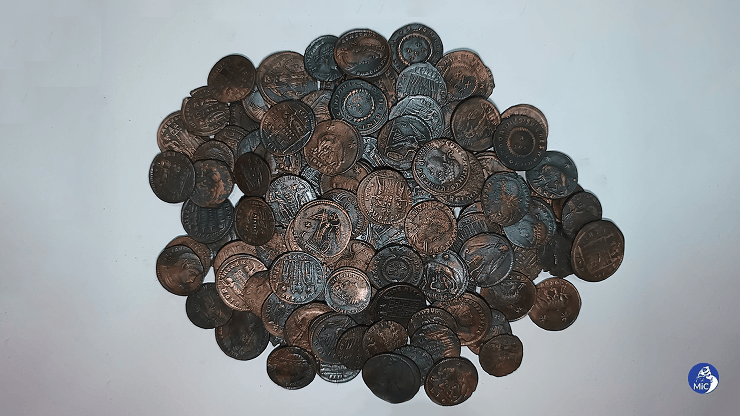Tolik krásných Římanů...50000....tak si říkám,kolik settisic,nebo milionů podobných mincí leží v depozitařich muzeí,a tady by člověka úřady pomálu lynčovali , kdyby si chtěl jednu nalezenou mincičku nedejbože nechat...kvuli komunistickému zákonů,a myšlení úředníků v muzejních,a na úřadech...
Přitom úřady,muzea,a jejich pracovnici by měli mít největší zájem na tom,aby si nálezce mohl BĚŽNÉ mince a artefakty ponechat,(nebo je třeba darovat do muzea dobrovolně )... protože jedině tento systém zaručí,že každý hledač, všechny nalezené věci oznámí ke zdokumentovani archeomuzejnikum,a ti by měli najednou tolik informací k bádání,že by jim z toho bylo mdlo.... Represe,a perzekuce nikdy nikde příliš dobře nefungovaly...
Recreational diver discovers up to 50,000 4th century Roman coins
Categories: Nálezy nejenom s detektorem v západní Evropě , Nálezy nejenom s detektorem kovů v mořích a oceanech
Off the north-eastern coast of Sardinia, a huge collection of tens of thousands of coins dating from around 340 AD was found on the seabed near the town of Arzachena. Nearly all of them are in very good condition, and even the worse ones are all still legible today.
The first coins were discovered by an Italian hobby diver when he noticed a glint of metal in the shallows. He reported the discovery to the authorities, who sent underwater archaeologists and heritage officials to the site. The following day, two major coin deposits were discovered in a large sandy area between the beach and the seagrass border. Among the coins were also fragments of amphorae from Africa and the Middle East.
An initial estimate of the number of coins based on the weight of the finds is around 30,000 and 50,000 pieces. All the coins are so-called follis (also known as nummi), which are bronze coins with a thin top layer of silver. They were introduced by Diocletian in 294 AD, when the currency had been devalued several times and the silver content was minimal to almost zero. These coins were used throughout the empire.
Luigi La Rocca of the Archaeological Department of Sardinia described the find as one of the most important coin discoveries in recent times. He said it was further proof of the richness and importance of the archaeological heritage preserved beneath the seabed.
All the coins recovered and catalogued so far date from 324 to 340 AD. Conservators are still sorting through the vast number of coins. Cleaning them, as well as preserving related archaeological materials, will allow archaeologists to learn more about the context of the giant find. Although there are no plans for a surface excavation at this time, archaeologists suspect the remains of a shipwreck under the seagrass and sand based on the topography of the seafloor.
Roman Nemec
Sources: thegurdian.com, apnews.com





The article is included in categories:
- Archive of articles > Archaeology > Finds and rescue research abroad > Nálezy nejenom s detektorem v západní Evropě
- Archive of articles > Archaeology > Finds and rescue research abroad > Nálezy nejenom s detektorem kovů v mořích a oceanech



